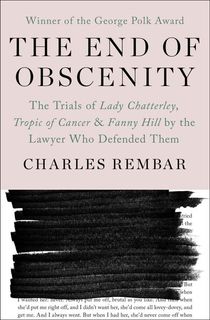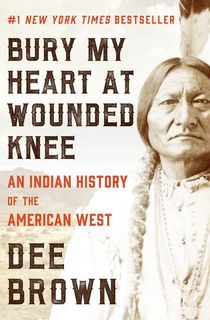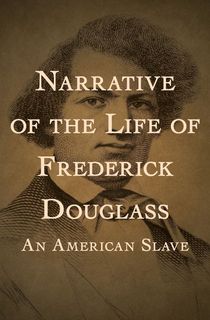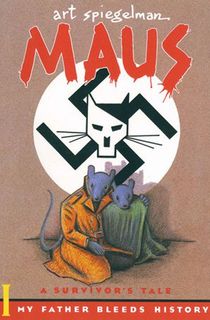Some of the most beloved novels of all time—classics that have shaped education, society, and personal growth for decades—have also been the most controversial. For many of us, books are where we first started to explore the world around us and the beliefs we held in relation to it. Books were what inspired our first individual thoughts, where we first discovered our personal voice. But in some communities, books with complex issues—or themes that don't fit with their ideal moral mindset—are deemed too dangerous for developing minds.
This restriction of art and knowledge happens all around the world. It was a rampant, violent act in Nazi Germany. An ancient lash of censorship in China. And something that is still alive and well in American debates today. But what makes a community feel threatened by a piece of literature, and what books have been at the forefront of community challenges over the years? We're diving into the fascinating history behind 13 banned books.
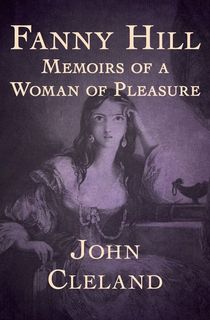
Fanny Hill
First published in Britain in 1748, this infamous book was not only one of the first erotic novels published in the English language, but also the first book convicted of obscenity in the United States. The story follows Fanny, a 15-year-old girl who moves to London in search of work after the tragic loss of her parents. She is taken in as a maid by a wealthy madame who, unbeknownst to Fanny, intends to sell off Fanny’s virginity. The novel, told in the format of reflective letters by the aged protagonist as she looks back on her life, spares no details in documenting the evolution of Fanny as she navigates all manner of sexual adventures and misadventures as a “woman of pleasure.”
Fanny Hill is one of the most challenged books in history. Immediately after the publication of its second volume in 1749, British officials arrested Cleland and his publisher for “corrupting the King’s subjects.” By then, the book had already spread to the American colonies, where, in 1821, it would become one of the first books put on trial and banned for obscenity in the United States due to explicit content and lack of “redeeming social value.”
The ban remained in effect until 1966, when the Supreme Court ruled that Fanny Hill, along with two other similarly controversial books, Tropic of Cancer and Lady Chatterly’s Lover, was not obscene and therefore protected by the First Amendment. In Britain, the government seized tens of thousands of illegally printed copies between the early 1960s and 1970, when its centuries-old ban was finally lifted.
Decades later, the book continues to draw ire. Singapore only just lifted its ban in 2015. In 2017, Fanny Hill was dropped from a University of London course on 18th-century literature for fear of offending students.
The End of Obscenity
After successfully litigating the 1966 Supreme Court obscenity trial that lifted the U.S. ban on Fanny Hill, attorney Charles Rembar wrote his own firsthand account of the case. Originally published in 1968, The End of Obscenity compiles insight from lawyers, judges, and the author himself. Rembar offers a gripping account not only of the trial that reshaped the American public’s perception of controversial literature, but of the culture of book-banning in America that led up to it.
Unsurprisingly, Rembar’s book was met with pushback from opponents of the ruling he had helped secure. However, critical reception of Rembar’s account was overwhelmingly positive, and the book even went on to win a George Polk Award.
There’s no question that Rembar’s book offers a stimulating account of the battle for free speech in America. Whether it was the “end of obscenity,” however, is up for debate. Since 2021, at least 20 states have passed or considered obscenity laws targeting schools and libraries. Five of those states have successfully passed legislation that permits for the prosecution of librarians who distribute obscene or “harmful” books to children; two more, Idaho and North Dakota, would have done so if their governors hadn’t vetoed the legislation.
Bury My Heart at Wounded Knee
Before this book was published in 1970, most Americans found comfort and pride in their country’s mythology of Western expansion fueled by Manifest Destiny. Bury My Heart at Wounded Knee changed that. The highly impactful and controversial book shattered readers’ illusions about how the West was won with a heart-rending account of the betrayal and violence employed by European settlers to systematically decimate Native American populations in the late 19th century.
While many readers saw the value in spotlighting a crucial aspect of American history that had for too long been ignored (the book has sold over five million copies and remains in print), others were less than eager to update the narrative. A Wisconsin public school administrator banned the book in 1974, defending his decision by saying, “If there’s a possibility that something might be controversial, then why not eliminate it?”
While you might be tempted to write off his justification as the residual moral panic of a bygone era, consider that in 2022, Florida’s state legislature advanced bills that would permit parents to sue a school if a lesson caused students “discomfort, guilt or anguish”—emotions which a book like Bury My Heart at Wounded Knee certainly spark. But, as this book reminds us, that doesn’t make its contents, or any of America’s uncomfortable history, less important to learn. If anything, it makes it more essential.
Narrative of the Life of Frederick Douglass
This literary classic is the autobiographical account of writer and abolitionist Frederick Douglass. Douglass was born into slavery in Maryland in 1818. For years, he risked his life secretly teaching himself to read and write. By the time escaped to the North in 1838, he had a lot to say to America, and had equipped himself with the tools to do it. The result was Narrative of the Life of Frederick Douglass, published in 1845. It was the best selling of all contemporary fugitive narratives, selling 5,000 copies within four months of its publication and 30,000 by the beginning of the Civil War in 1861.
Almost two centuries later, both the prominence and the importance of his graphic, soulful, and powerful cross between memoir and human-rights treatise endure. It is a staple of both the American literary and civil rights canons. For that very reason, it has also found itself caught in the recent wave of censorship in America.
It was one of 42 books, including eight by Black authors, banned in Oklahoma public schools between July 2021 and March 2022. It was banned on the grounds that it discussed “critical race theory,” forbidden under recent state Law 1775. Douglass’s autobiography is also one of thousands of books banned by state and federal prisons in America, arguably among the most prolific and arbitrary book-banning institutions in the country. Just as this book threatened the institution of slavery in the mid-1800s, so it threatens modern forces of oppression today, and those forces are responding in kind.
Maus I: A Survivor's Tale
A powerful recreation of one family’s lived experience during the Holocaust, this graphic novel creates a complex, moving picture of life during one of the worst atrocities in history. Representing Germans as cats, Jews as mice, Poles as pigs, and Americans as dogs, Maus traces the life of Art Spiegelman’s father, a Polish Jew, from his marriage to his struggles in Nazi-occupied Europe, and eventually to his internment at Auschwitz. Spiegelman also includes interviews with his aging father, whose memory holds their family history and provides source material for the book. By interweaving the stories of family survival with the troubled relationship between the author and his father, Spiegelman creates a read “that cannot be put down, truly, even to sleep” (Umberto Eco).
Serialized from 1980 to 1991, the graphic novel has since been highly praised for its representation of an incredibly difficult but timelessly important subject. Maus won the Pulitzer Prize, becoming the first graphic novel to do so and thereby changing the industry’s perspective on comics, and has been called “the first masterpiece in comic book history” (The New Yorker).
However, while its coverage of challenging topics won the novel academic praise, the same disturbing elements that make the book impactful have been used as ammunition against it. The book faced protests in Poland for its depiction of Poles as pigs, and was removed from Russian bookstores due to the swastika on its cover. Furthermore, as recently as 2022, a Tennessee school board banned Maus for depicting profanity, nudity, and violence to an eighth-grade audience, even though the images were carefully contextualized. The censorship made national headlines and sparked fierce debates on book bans. While Maus continues to be contested for its frank depiction of historical horrors, it is still considered an important and artistically unique rendering of the legacy of the Holocaust.

1984
Published in 1949, George Orwell's 1984 takes place in London in its titular year. Orwell imagined a grim future—a totalitarian state under the constant watch of Big Brother. With the Thought Police maintaining a hypervigilant control, Winston Smith is in serious danger for having a well-functioning memory. Tangled up in a forbidden love, Winston joins the revolutionary Brotherhood, determined to bring about the end of the Party. With his beloved Julia at his side, he risks his life against those who hold all the power.
While this groundbreaking novel has a place of honor as a PBS Great American Read Top 100 Pick, it also maintains its status as the most banned book of all time in America. Why was it banned? Its social and political themes were found to be too controversial, and its sexual content was deemed inappropriate. In 1981, Jackson County, Florida challenged the book for being pro-communism. Considering large portions of the text are not only anti-communist but in fact anti-government all together, this challenge seems like a bit of a stretch. Furthermore, the book was based on the very real political climate of Nazi Germany and Stalinist Russia, warning against the totalitarianism that caused so much suffering in those countries and the regions over which they had influence.

To Kill a Mockingbird
This coming-of-age tale is set in the South during an era of great prejudice. Through the eyes of a young girl named Scout, readers walk through a world containing both great beauty and violent inequality. As Scout's crusading lawyer of a father puts everything on the line to defend an innocent Black man accused of a heinous crime, the reality of racism slowly unwinds before the young girl's eyes.
To Kill a Mockingbird has been translated into more than 40 languages, won a Pulitzer Prize, and was voted America's Best-Loved Novel in PBS's The Great American Read. Yet for all its calls for an end to injustice, the subject matter just makes some people too uncomfortable. 10th on the list of most banned books in America of all time, this book actually ranks 7th on the list of most frequently banned books in America today.
Why was this book banned? In 1966, school boards banned the novel for being "immoral," a move which made author Harper Lee publicly compare the criticism to that faced by 1984. More recently, the book has been banned for touching on "racial issues" and its use of racial slurs. In many recent cases, the book was simply taken off of mandatory reading lists, but still available for individual student reading. Some schools felt that the book promoted the narrative of a "white savior" or was otherwise degrading to the Black community. Other schools felt that use of racial slurs were too sensitive of a subject to freely discuss in class, going so far as to say the inclusion of the slurs in the book actually promoted racism and white supremacy. Of course, its "sexual content" also posed an issue.

Melissa
Originally published under the title George, this 2015 children's book has caused a whirlwind of controversy. The simple story follows the journey of a transgender girl in the fourth grade. Melissa was born George, and that's what the rest of the world sees. But Melissa knows that she's not a boy—she's a girl. Feeling as though she'll have to keep her true self a secret forever, Melissa is greatly conflicted when her teacher announces their class play. She wants nothing more than to play Charlotte in Charlotte's Web—but she's not allowed to audition, since the part is only for girls. With the help of her best friend, Melissa plans a way to show the world who she really is.
Though this book has received a great amount of praise, it has also been challenged since its release seven years ago. It topped the list of most challenged books in America in 2018, 2019, and 2020. It has been cited as having a controversial religious viewpoint, including inappropriate sexual references, and conflicting with a "traditional family structure.” While the issues in this book are certainly complex, people have contested its inclusion in libraries and schools because these institutions should not “put books in a child’s hand that require discussion.”

Of Mice and Men
A common requirement in high school classrooms, this story follows the unlikely duo of migrant workers George and Lennie as they try to make a living in California during the Great Depression. Constantly striving for the elusive American Dream, they take on any job that feeds them as they flesh out their plan for the future: an acre of land with a little shack to call their own. After landing a job on a ranch, it seems like this future might finally come to fruition. But Lennie's mental disability causes problems in a world already full of hardship.
This heart-wrenching tale is so popular it was adapted not only into three different films, but into a Broadway play as well. Even so, it is number eight on the list of most banned books in America of all time and remains in that spot as of today. It is controversial in certain communities because of profanity, vulgarism, violence, racism, and its attitude toward women. Many of these complaints reflect period-accurate attitudes which were often contextually criticized. Other more perplexing issues with the text include "morbid themes" and an "anti-business attitude."
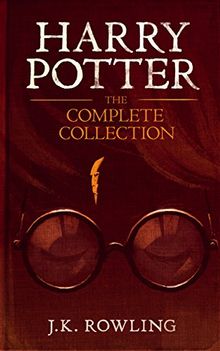
The Harry Potter Series
A modern sensation, the Harry Potter series is perhaps the most beloved set of novels in recent history. First published in 1997, the series follows a young boy who doesn't know about his magical lineage—or the details of his tragic past. When he's whisked away to Hogwarts School of Witchcraft and Wizardry, everything begins to change for him. No longer lonely and out of place, he is not only a revered survivor of a dastardly villain, but one in a trio of clever children who will change the magic world forever with their bravery.
J.K. Rowling's personal and political opinions have caused no shortage of controversy over the last couple of years; her tweets about transgender women in particular have been widely condemned. But that backlash hasn't stopped her massive franchise from expanding. Her seven-part series and its accompanying movie adaptations have grown further with other in-universe spin-offs both on screen and on the page. Not only that, Universal Orlando is home to the new amusement park The Wizarding World of Harry Potter.
So why has this book been banned from schools, libraries, and plenty of individual homes? Largely for its occult themes, otherwise seen as promoting Satanism. Its discussion of magic is seen as anti-Christian, and ruffled feathers by including actual curses and spells in the text. Beyond that, it has been banned for its characters who use "nefarious means" to achieve their goals. The series first hit the top of banned books list in 1999, and has maintained a fairly steady presence since, though 2020 saw it finally fall off from the top 10 tier.

The Hate U Give
Published in 2017, this devastating read follows Black teenager Starr Carter. Living in a low-income neighborhood and attending a suburban prep school, she finds herself pulled between two vastly different worlds, made all the more complicated by her race. The precarious balance she has struck topples when her childhood friend, Khalil, is shot dead by the police, despite being unarmed. His death makes national news, dividing Starr's communities between those who saw Khalil as a thug and those who saw him as an innocent boy. As everyone clamors for the truth, Starr is the only one who knows what truly happened. And her words could turn everything upside down.
Tension between the police and the Black community is certainly nothing new, but so few pieces of media are given the chance to become mainstream when they address it. After its publication, the book saw great commercial success, a popular movie adaptation, and a wealth of awards, including the Edgar Award for Best Young Adult Novel and the Goodreads Choice Awards Winner for Young Adult Fiction. However, this book was challenged and banned for its use of profanity, sexual content, drug use, and anti-police sentiment. Topping the list of banned books each year since its initial release, it still holds place number 10 on the list of top banned books in America today—a complicated slot to hold given the Black Lives Matter movement and ongoing protests against racial oppression.

Speak
When Melinda starts her freshman year at Merryweather High, she knows their cheesy claims about wanting to know what she has to say are total bogus. She's entirely alone—a complete and total outcast—and all because she busted up an end-of-summer party by calling the police. It's hard enough to get people to talk to her, let alone listen. Her isolation only grows more severe as time passes, her only form of expression found in art class. Through this project, she gets to speak her terrible truth: at that fateful party, she was raped. But she won't be kept silent forever.
A 1999 National Book Award Finalist for Young People's Literature, this pivotal book was also adapted into a popular film of the same name. So why was this book lauded for uplifting disenfranchised, abused youths also found at number four on the list of top banned books in America in 2020? It was said to have a political viewpoint, deemed inappropriate for its profanity and sexual content, and deemed biased against male students.

The Kite Runner
This gripping novel is set in Afghanistan during a period of tense change and destruction. A vital story of friendship unfolds between a wealthy boy and the son of his father’s servant as tragedy looms all around them. But more than just a tale of friendship, it speaks to the power of reading, the devastation of betrayal, the hope of redemption, and the complicated bonds of fathers and sons.
Published in 2003, this book became a New York Times bestselling novel, reaching millions of adoring readers. By 2008, however, it was the most-challenged book, according to The American Library Association. While it has been challenged less in subsequent years, it was still fourth on the top 10 banned books list of 2017. In a post-9/11 world, there was always going to be controversy surrounding this book, so it comes as no surprise that some of its challenges derive from thoughts that it promoted terrorism and Islam. However, this novel was also banned for depicting sexual violence, profanity, homosexuality, general violence, a religious viewpoint, sexual content and nudity, and for being unsuitable for school age students.
Featured image: Jason Wong / Unsplash

